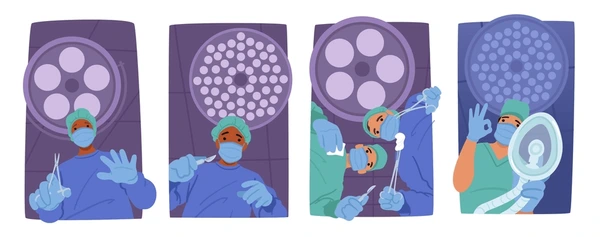
Introduction: Surgical procedures require a multidisciplinary approach to ensure patient safety and

General anesthesia is essential for pain-free surgery, and anesthesiologists ensure its safe use. They assess patients pre-surgery, tailor the anesthesia plan, and monitor vital signs throughout the procedure. Post-surgery, they manage recovery, pain, and potential complications. Their expertise is vital for patient safety and successful surgical outcomes.
Regional anesthesia blocks sensation in a specific body area, offering a safer alternative to general anesthesia for many procedures. Anesthesiologists evaluate patients, use advanced techniques like ultrasound for precise delivery, and monitor effectiveness during surgery. Postoperatively, they manage pain and any side effects. Regional anesthesia often leads to faster recovery and fewer complications.
Local anesthesia numbs a small area, allowing minor procedures while the patient stays awake and comfortable. Anesthesiologists ensure safe application, choosing the right dose and type based on the patient's health and procedure. They monitor for side effects and manage comfort, often using light sedation. Local anesthesia offers quick recovery, fewer risks, and is ideal for outpatient care.
Sedation helps patients relax and reduces anxiety during procedures without full unconsciousness. Anesthesiologists tailor sedation levels—from minimal to deep—based on patient history and procedure type. They administer sedatives, monitor vital signs and consciousness, and ensure safety throughout. Often paired with local or regional anesthesia, sedation enhances comfort for diagnostic tests and minor surgeries and supports a smooth, side-effect-minimal recovery.
Customized Care: Your anesthesiologist tailors the anesthesia plan to your health and surgery type.
Vital Monitoring: They watch your heart rate, blood pressure, breathing, and oxygen levels continuously.
Pain Control: You stay pain-free during surgery, and they manage any discomfort afterward.
Rapid Recovery: By minimizing side effects, they help you wake up smoothly and recover faster.
Emergency Readiness: They’re prepared with medications and protocols for any rare complications.

Introduction: Surgical procedures require a multidisciplinary approach to ensure patient safety and

The evolution of anesthesia techniques represents a fascinating journey through medical history,

Anesthesiologists are vital members of the surgical team, dedicated to protecting patient

There are four main categories of anesthesia used during surgery and other